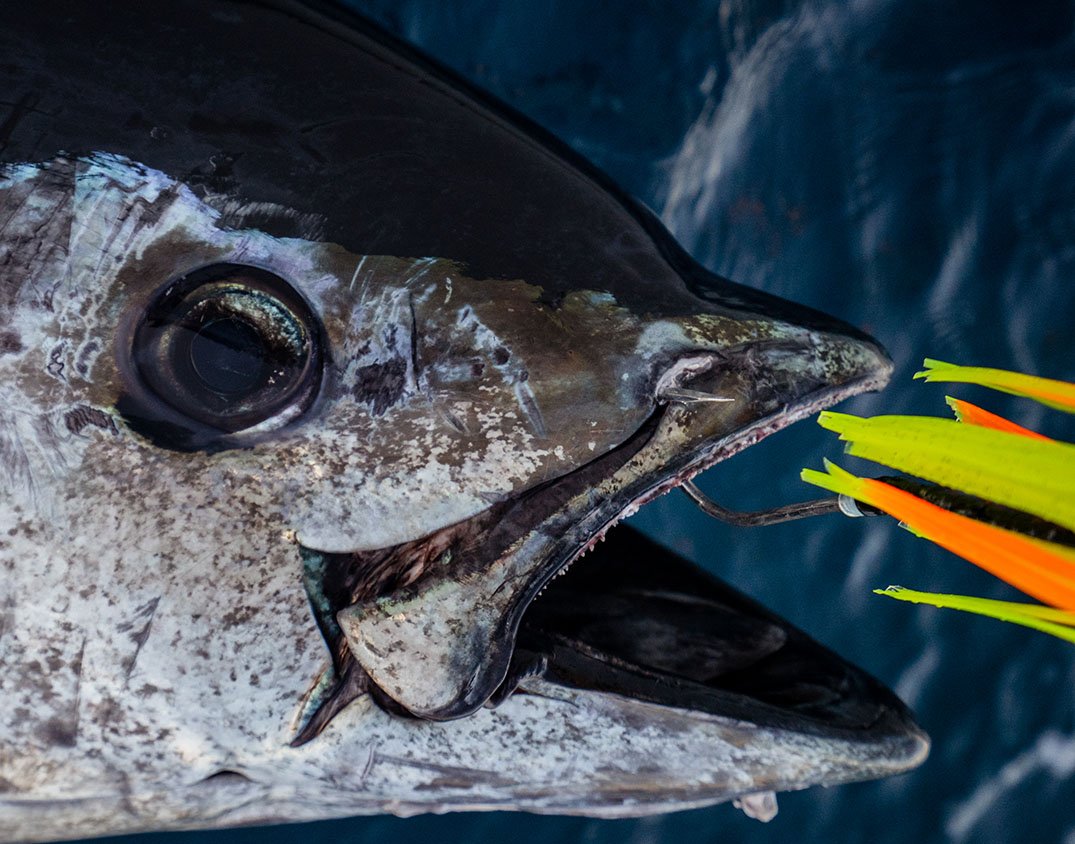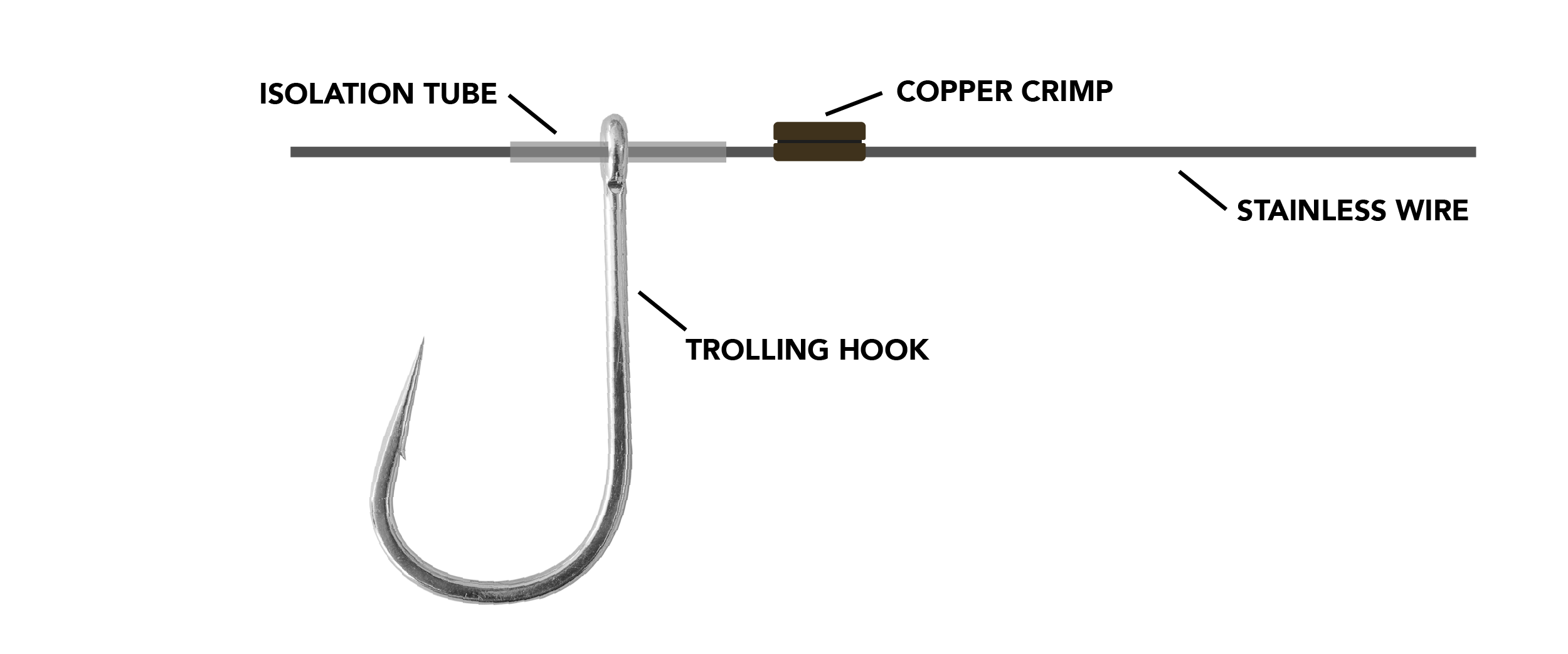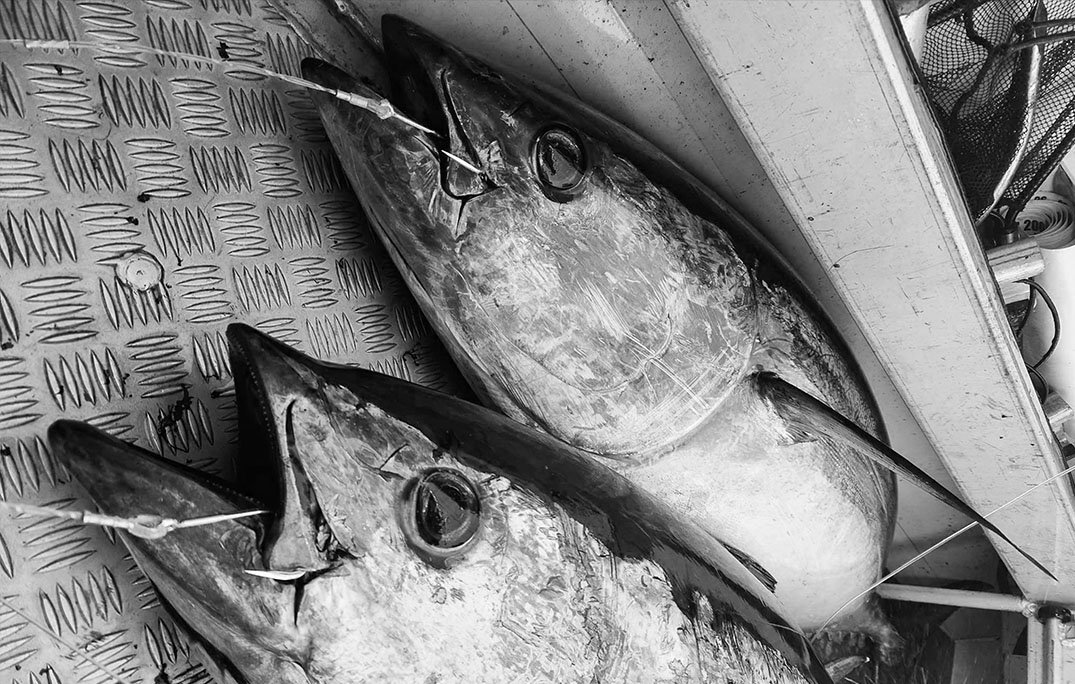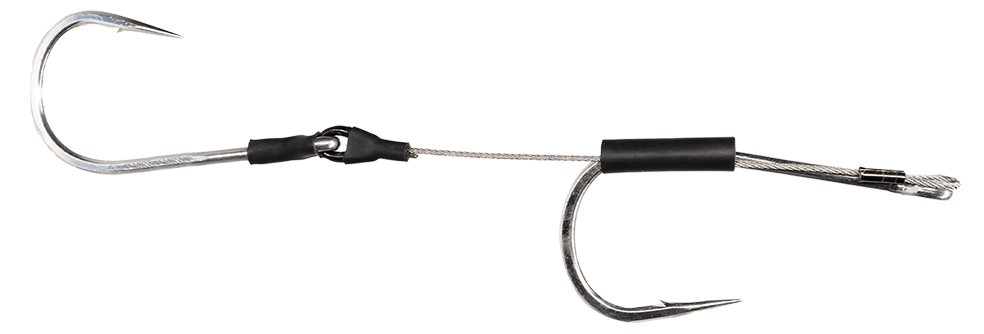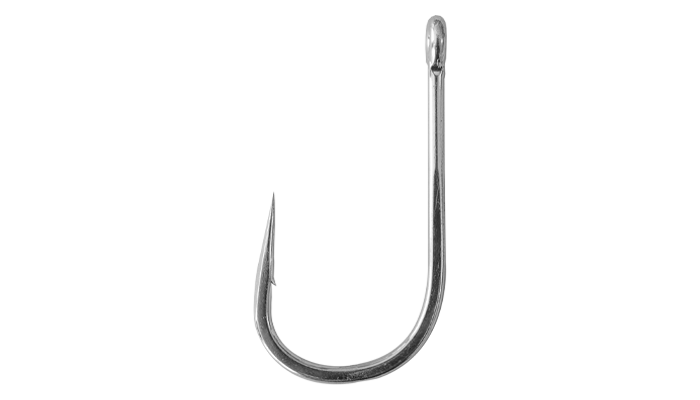Trolling Hooks for Tuna: How to Rig For Reliable Hook Sets
Trolling lures for Tuna; it’s almost a rite of passage in New Zealand at this point. The time of year when anglers from all over the country flock to the East Cape to try challenge themselves against Southern Bluefin Tuna, the meaty torpedos that pass through during the Winter months. Every year boatloads of people hook their dream fish, and every year, unfortunately, some will head home disappointed.
The time, money, and effort required for this style of fishing is considerable, so it’s important to make sure you’re giving yourself the best chances of success.
In this article, we will be diving into what we do to make sure our rigging is spot on, and what will give us the best chances of a successful tuna mission.
How to Rig Tuna Trolling Hooks
STEP 1. Selecting the right hooK
Trolling lure hooks come in a range of designs, sizes, and materials. But for the most part they all share a similar design.
Trolling hooks typically feature a long straight shank with an eyelet that sits 90-degrees to the orientation of the hook point. They will also be constructed of a heavy-gauge wire, although many are available in light-gauge; for those who prefer it.
Hook selection will come down to personal preference a lot of the time, but the key points you’ll want to hit are sharpness, durability, and strength.
Matching the right size hook to your lure is also important. Your nearest BKK retailer will be able to offer the best advice on which size hook to use based on the trolling lures you’ll be running.
For this tutorial, we will be using the BKK Kajiki HD trolling hooks. The Kajiki HD was designed from the ground up to address the performance required for heavy game fishing, including Marlin & Tuna, and are your best choice for raw strength and superior sharpness.
STEP 2. Materials Needed
There’s something incredibly rewarding about rigging your own gear. Catching gamefish on a rig you’ve made from scratch adds a whole new aspect to the sport.
Here’s what you will need:
1. Crimping Tool
2. Stainless wire (or mono if you prefer)
2. Copper Crimps
3. Chafe Tube
4. Heat Shrink
5. BKK Kajiki Trolling hooks
Your local tackle store should have these items available. Be sure to select the right size chafe tube stainless-steel wire, copper crimp, and heat shrink to match your chosen hook size.
(If you want to remain compliant with IGFA regulations, talk to your local tackle store or check out pages 4-7 of the IGFA Rules)
STEP 3. Prepare.
Arrange your pieces as shown below. This is where you will need to pay attention to IGFA rules around line lengths and hook arrangements.
• Trim the chafe tube to a length that allows a tidy 'U' shape when looped through the hook eye
• The hook eye should not be able to contact the steel wire directly. This is to avoid any reaction between the high-carbon steel of the Kajiki HD and the stainless wire.
• Check that nothing is too tight or too loose. The hook should still have free movement.
Note: If you’re rigging multiple lures, do a test first to make sure everything ends up correct, then come back and make any adjustments, then cut the rest of the lengths.
Step 4. Dry fit AND crimp.
Once you’re sure everything is how it should be, you can now lock everything down.
Double-check the crimp setting on your crimping tool. The last thing you want is to have a crimp fail mid-fight because it wasn’t crimped enough!
You will also need to crimp the top loop here. Slide another copper crimp onto the top of your wire and form a small loop by inserting the loose end back through. You will want a top loop that sits 90-degrees to the bottom loop. This can take a few tries to get right, but getting it right will ensure your hooks run in the optimal orientation whilst trolling.
Step 5. Heatshrink to lock it all down.
The last step is to apply the heat-shrink. This stops the possibility of the hook swinging back on itself and getting stuck.
Extra: Double-hook Rigging
Adding an extra hook at this stage is easy. Just slip another short length of heat-shrink over your end loop, and insert your secondary hook through this to hold it in the correct orientation. The connection to your mainline will now pass through the eye of your hook AND the top loop of your wire rig.
There are many other ways to rig trolling lure hooks, however this is how we prefer to rig ours and generally how we recommend the Kajiki range of trolling hooks to be rigged.
If you’re unsure about hook sizes or the materials required, your local tackle store will be able to point you in the right direction.
You can also get in touch with us via our social media channels and a member of the team can help you out.
Happy trolling! 🎣

